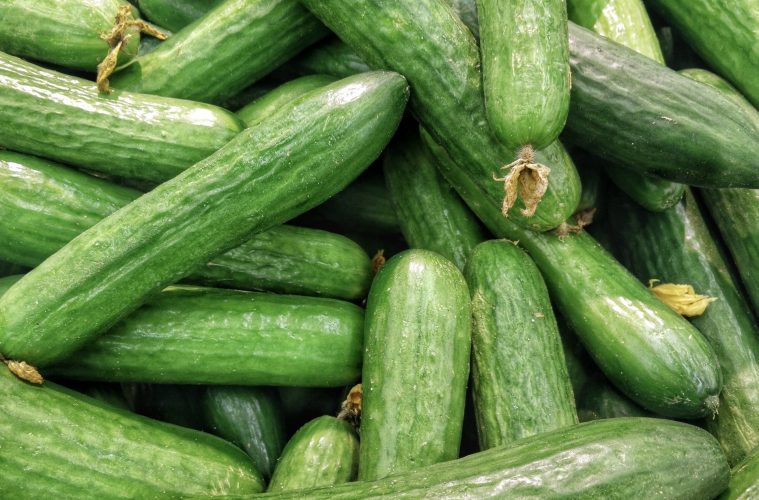Cucumbers (Cucumis sativus) are part of the Cucurbitaceae family, originating in India. There are over 100 varieties of cucumber, including the smaller pickling varieties that are popular for growing on patios in pots.
There are two types of cucumbers: vining cucumbers and bush cucumbers. The type of cucumber you decide to grow will depend on your available space. Within both types, there are also different varieties best for slicing or pickling and some are even seedless.
Most cucumbers have a compound called Cucurbitacin present mainly in the skin which is a defensive deterrent to any herbivores wanting to eat them. It’s this compound that also makes some cucumbers bitter.
Cucumbers are easy to grow and with a few essential ground rules – lots of water, warmth, fertiliser and harvesting on time. Here are some growing tips to get it right.
Planting
- Plant cucumbers in spring and summer when the temperature is warmer. You can also sow seed indoors or in a greenhouse when the temperature is low and plant them out as the temperature reaches above 16°C.
- Cucumbers need at least 8 hours of sunlight a day to flower and set fruit for a good harvest. Less than that will affect the yield.
- Although they will grow in just about any well-draining soil, cucumbers prefer rich, loamy soil enriched with loads of compost and a few handfuls of organic slow-release fertilizer.
- Cucumbers need consistent watering. Any lack of water for a period of time will result in bitter fruit. This makes sense when you consider that cucumbers contain 96% water – the highest of any fruit. Give them a good soak once a week in cooler weather and increase this amount in hot weather. Water in the mornings and avoid getting the leaves wet which can encourage mildew.
Maintenance
- Feed cucumbers two or three times during the growing season with a balanced fertilizer for fruit and flowers.
- Vine-type cucumbers do best grown up some sort of supporting structure. This can be trellis, fence, arbor, a grouping of poles. Anything vertical made of plastic, wood or metal at least 2m high will do. Gently tie the fragile vines onto the support structure loosely with string, strips of fabric or garden ties.
- Cucumbers need good air flow and should not be left to ramble. Prune cucumbers if they become unwieldy and overgrown to make sure there is enough air flow to prevent fungal diseases and to stimulate fruit production.
- Pinch out the growing tips on cucumbers that have six or more leaves so that the plants produce more side shoots and more fruiting points.
- Add a layer of straw as a mulch under any fruit that is close the ground to keep them clean and help keep slugs and beetles away.
- Look out for pests and diseases like powdery mildew when conditions are dry and downy mildew when conditions are hot and humid.
Harvesting
- Each variety of cucumber will have a more accurate time of harvesting, but in general, look for a dark green color and firm flesh. Cut the cucumbers off the vine or bush including a small piece of stem. Once they begin to yellow it’s too late – catch them when they are green. Cucumbers left on the vine will become bitter and develop and unpleasant texture.
By Madison Moulton
ALSO SEE HOW TO GROW CHILLIES AT HOME

